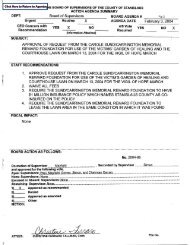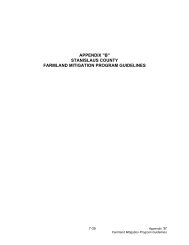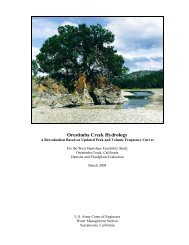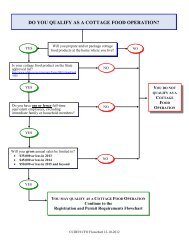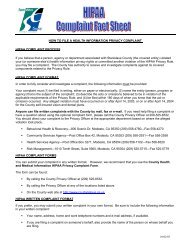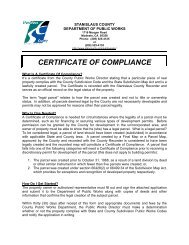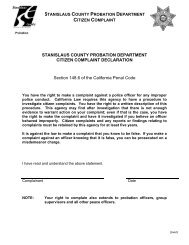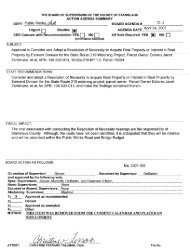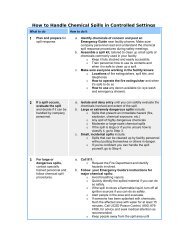Orestimba Creek Feasibility Study - Stanislaus County
Orestimba Creek Feasibility Study - Stanislaus County
Orestimba Creek Feasibility Study - Stanislaus County
Create successful ePaper yourself
Turn your PDF publications into a flip-book with our unique Google optimized e-Paper software.
Economics Appendix – Draft Report - <strong>Orestimba</strong> <strong>Creek</strong> <strong>Feasibility</strong> <strong>Study</strong>, <strong>Stanislaus</strong> <strong>County</strong>, California – September 2012<br />
The characteristics that are recognized as having an influence on social vulnerability generally<br />
include age, gender, race, and socioeconomic status. Other characteristics include population<br />
segments with special needs or those that lack the normal social safety nets necessary in disaster<br />
recovery, such as the physically or mentally challenged, non-English speaking immigrants,<br />
transients, and seasonal tourists. The quality of human settlements (housing type and<br />
construction, infrastructure, and lifelines) and the built environment are also important in<br />
understanding social vulnerability, especially as these characteristics influence potential<br />
economic losses, injuries, and fatalities from natural hazards.<br />
The discussion below focuses on the measures of social vulnerability that will be evaluated<br />
considering both the affect of construction and the affect of a flood event.<br />
Income, political power, prestige: This measure focuses on ability to absorb losses and enhance<br />
resilience to hazard impacts. Wealth enables communities to absorb and recover from losses<br />
more quickly due to insurance, social safety nets, and entitlement programs. As a measure,<br />
median household income of Newman is very close to that of <strong>Stanislaus</strong> <strong>County</strong>, $49,359 and<br />
$50,359 in 2008 respectively and is not at a proportional disadvantage to the general surrounding<br />
area.<br />
Gender: Women can have a more difficult time during recovery than men, often due to sectorspecific<br />
employment, lower wages, and family care responsibilities. Although data is not<br />
specifically available concerning the wage rate of male verse female for the Newman area, it is<br />
recognized that a smaller percent of women are employed in the labor force in Newman than in<br />
the larger two metropolitan cities of Turlock and Modesto. The percentage of variation of this<br />
factor however is quite small.<br />
Race and Ethnicity: Race and Ethnicity imposes language and cultural barriers that affect access<br />
to post-disaster funding and residential locations in high hazard areas. It is recognized that<br />
Newman has a significant hispanic population (60.0%) which is recognized in the literature as<br />
being one of the highest in the State of California.<br />
Age: Extremes of the age spectrum affect the movement out of harm’s way. Parents lose time<br />
and money caring for children when daycare facilities are affected; elderly may have mobility<br />
constraints or mobility concerns increasing the burden of care and lack of resilience. Those over<br />
65 years of age are estimated at 9.7% in the year 2000. This is slightly less than the State<br />
average.<br />
Employment loss: The potential loss of employment following a disaster exacerbates the<br />
number of unemployed workers in a community, contributing to a slower recovery from the<br />
disaster.<br />
Rural/urban: Rural residents may be more vulnerable due to lower incomes, and more<br />
dependent on locally based resource extraction economies (e.g., farming, fishing). High-density<br />
areas (urban) complicate evacuation out of harm’s way.<br />
98




